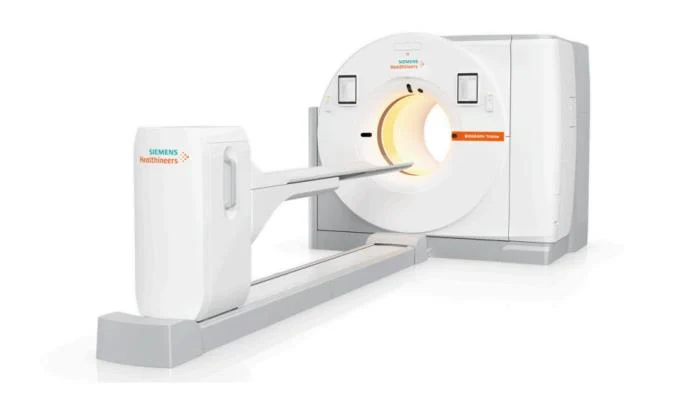What’s New in PET/CT
Prediction of lymph node metastasis by PET/CT metabolic parameters in patients with esophageal squamous cell carcinoma.
PET/CT Updates, Research & Education
August 2019
Purpose
The aim of this study was to investigate the capability of F-FDG PET/computed tomography (CT)-related metabolic parameters to predict lymph node metastasis (LNM) and occult lymph node metastasis (OLNM) in patients with esophageal squamous cell carcinoma (ESCC).
Methods
Totally 84 patients undergoing curative esophagectomy with lymph node dissection were enrolled in this study. Metabolic tumor volume (MTV) was measured using threshold-based methods with a threshold of 40% maximum standardized uptake value (SUVmax). The derivative of the volume (V)-threshold (T) function (volume difference/threshold difference) was defined as the heterogeneity factor (HF). In addition, SUVmax, SUVmean, total lesion glycolysis (TLG), maximum tumor-to-blood SUV ratio (SURmax), SURmean and several clinicopathologic parameters were analyzed to identify risk factors of LNM and OLNM.
Results
SUVmax, SUVmean, MTV, TLG, SURmax, SURmean and HF were significantly different between LNM (+) and LNM (-). The optimal cut-off values of those parameters were 12.5, 8.34, 15.01, 117.185, 7.885, 4.855 and 0.300, respectively. Logistic regression analysis showed that MTV (OR = 1.127, P = 0.04) and SURmax (OR = 1.446, P = 0.004) were independent predictors of LNM, with sensitivity and specificity were 51.2%, 83.7% vs. 53.7%, 79.1%. In univariate and multivariate analysis, MTV was the sole parameter associated with OLMN (P = 0.024).
Conclusion
MTV and SURmax were statistically significant predictors of LNM in patients with ESCC, while MTV was a predictor of OLNM. High SURmax and MTV may indicate that the treatment planning should be tailored, which may improve patient prognosis.
Source: Nucl Med Commun. 2019 Jul 22. doi: 10.1097/MNM.0000000000001050.
< https://www.ncbi.nlm.nih.gov/pubmed/31343610 > Retrieved 14 August 2019.

August Pain Medicine and Palliative Care Awareness
- Palliative care improves the quality of life of patients and their families who are facing problems associated with life-threatening illness, whether physical, psychosocial or spiritual
- Pain is one of the most frequent and serious symptoms experienced by patients in need of palliative care
- Early palliative care reduces unnecessary hospital admissions and the use of health services
Connect with Us
Get additional information and stay up-to-date with the latest news by connecting with us on social media.



